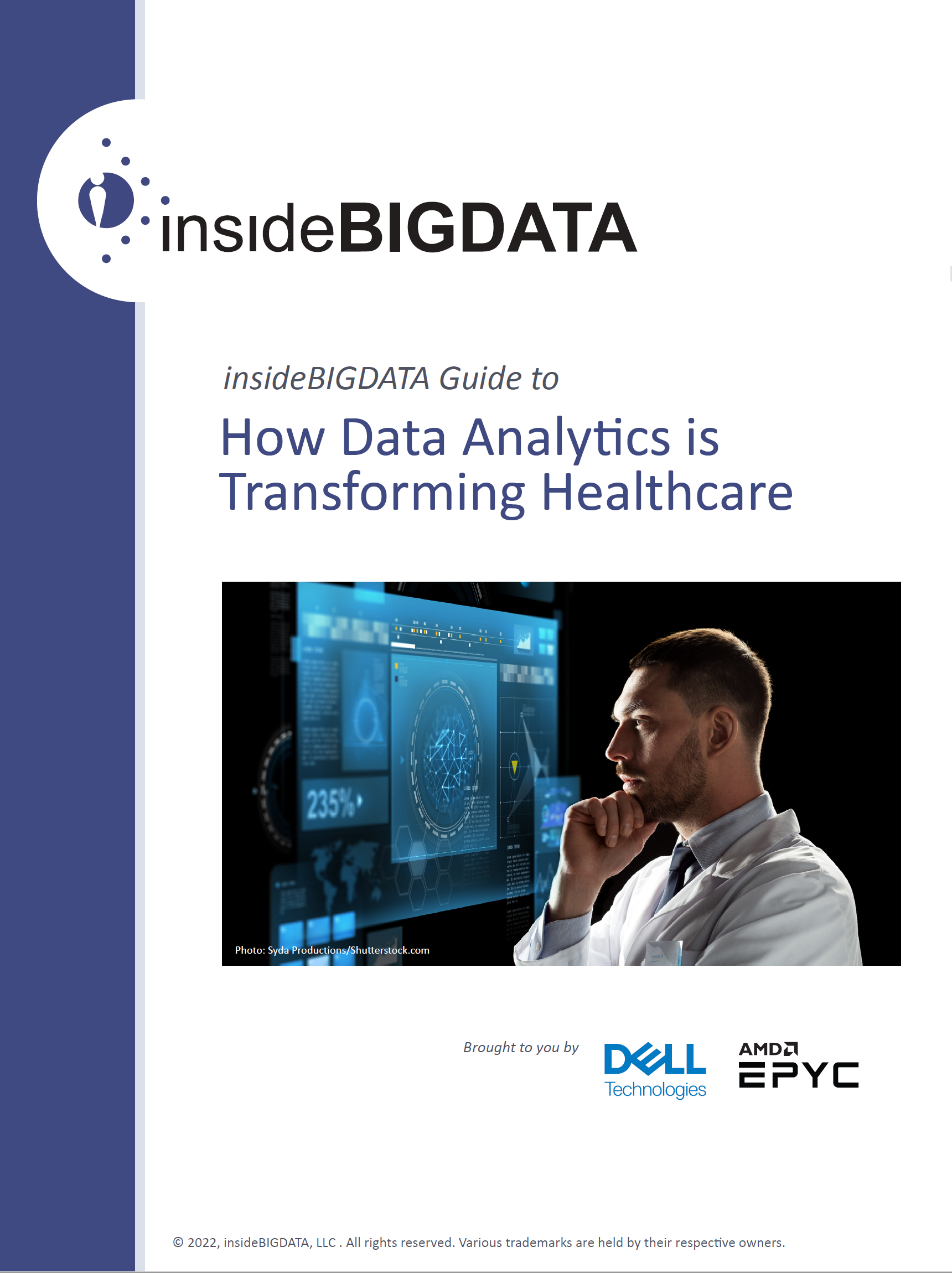Sponsored Post
Data-driven healthcare
When the average person imagines cutting-edge medical research, they picture doctors and scientists in white coats surrounded by chemicals, beakers, and specialized equipment. But the truth is that some of today’s greatest medical innovations come from a very different setting—people sitting at computers running analytics software.
This is no secret to people involved in the healthcare industry, of course. Administrators, physicians, researchers, and students are all aware that data analytics is in the process of transforming healthcare around the world. In fact, a Stanford Medicine report on “The Rise of the Data-Driven Physician” revealed that “nearly three-quarters of all medical students and nearly half of all physicians are planning to pursue additional education in data-oriented such as advanced statistics and data science.”
In addition, organizations are investing vast sums in analytics technology. Market researchers say that the global healthcare analytics market will likely be worth $39.7 billion in 2022 and is increasing at a 19% compound annual growth rate (CAGR).
Similarly, a Huron Consulting Group report titled “Embracing Healthcare’s Digital Transformation” found that nearly half of healthcare leaders surveyed (47%) are looking to data management and analytical decision making to help their organizations grow.
However, that same report added, “Digital, technology, and analytics strategies exist for nearly all organizations, yet only 30% have begun to execute on those plans.”
If your organization is one of the many that is still in the early stages of implementing its big data analytics strategy, you likely still have many unanswered questions. This technology guide, “insideAI News Guide to How Data Analytics is Transforming Healthcare,” sponsored by Dell Technologies, provides an overview of some of the trends influencing big data in healthcare, the potential benefits, likely challenges, and recommended next steps.
Benefits of big data in healthcare
Experts say that analytics can answer just about any question that you are trying to answer, provided you have enough data. As a result, the potential benefits of big data in healthcare are limited only by the imagination of the people thinking up the questions. That said, most healthcare organizations are focusing their big data analytics on answering a few key questions, like “How can we improve our patients’ health?” or “How can we make our organization more efficient?” Here are some of the most notable benefits resulting from big data analytics in healthcare:
IMPROVING PATIENT OUTCOMES
The number one goal of most healthcare organizations is to improve the health of the people they serve. Big data analytics is already helping patients lead longer, healthier lives in a number of ways:
- Identifying the most effective ways to prevent and treat opioid addiction
- Tailoring cancer treatment to the type of disease and the DNA of the patient
- Providing real-time alerts about potentially dangerous drug interactions or poor treatment decisions
- Providing health advice based on data collected by wearable monitors
- Tracking the Covid-19 pandemic
- Analyzing imaging scans for signs of illness or injury
- Alerting hospitals when people with mental illness are overusing the emergency room and would be better served by another form of treatment
- Determine which patients need to come in for an office visit and which would be best served by telemedicine
- Developing new therapies and drugs for treating diseases
- Preventing suicide and self-harm in at-risk patients
This is only a handful of the hundreds of different ways that healthcare organizations are using data analytics to find better ways to diagnose and treat disease.
STREAMLINING THE BUSINESS OF HEALTHCARE
Every organization experiences waste and inefficiency, but the problem is particularly acute in the healthcare industry. A 2021 report from McKinsey found that administrative costs account for about $1 trillion of the $4 trillion that the United States spends annually on healthcare. According to the firm, simplifying the administration of healthcare in the United States could result in savings of up to $265 billion—more than a quarter of a trillion dollars—per year.
Big data analytics can help with this process in a number of ways. For example, the coronavirus pandemic highlighted just how critical staffing and supply chain management are for care providers. Smart staffing based on big data analytics can help organizations make sure that they have the right number of staff available for the number of patients they are likely to see on a given day while maximizing the effectiveness of the available work pool. Analytics can also help improve supply chain management, as well as helping catch fraud and inaccurate claims. Analytics also enables strategic planning that helps hospitals, public health agencies, and other organizations better prepare to meet the future needs of their communities.
PROVIDING THE RIGHT TRAINING FOR STAFF
Any healthcare facility is only as good as its staff. Big data can help you identify staff members that might benefit from additional training, whether that is surgeons who need more practice with the latest techniques, back-office workers who need to learn systems and procedures, or staff members who need to improve communication or other soft skills.
Over the next few weeks we’ll explore these topics:
- Data-driven healthcare; What is big data?; Trends affecting big data in healthcare
- Benefits of big data in healthcare
- Challenges of big data in healthcare; What should you do today?; Choosing the right infrastructure for big data analytics
Download the complete iinsideAI News Guide to How Data Analytics is Transforming Healthcare technology guide courtesy of Dell Technologies and AMD.





Speak Your Mind